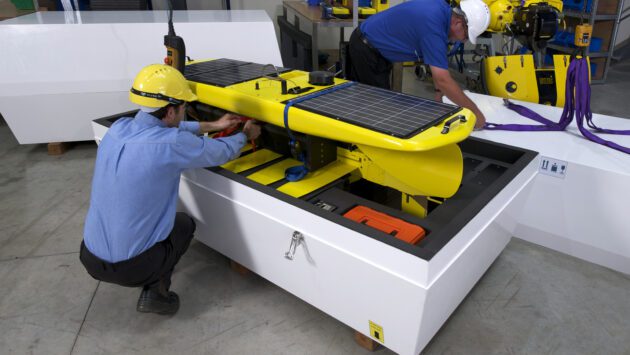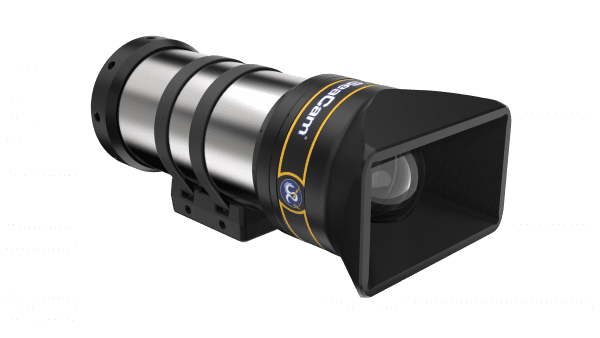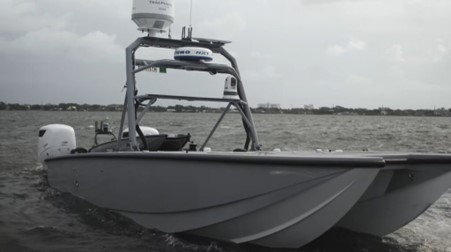Liquid Robotics Roadshow
Liquid Robotics Roadshow
A UVS and Liquid Robotics team has completed a coast-to-coast roadshow of new developments in Wave Glider technology. The team was pleased to introduce the enhanced capability of the SV3 Wave Glider to diverse groups who were interested to use the persistent, ubiquitous ocean sensing capability of the Wave Glider Autonomous Surface Vehicle.
At the Australian Maritime College in Launceston, Tasmania an interested group of staff and students participated in an active discussion on the application of Wave Glider technology to polar research. Senior Systems Engineer, Matthew Depetro shared experience and lessons learned from Wave Glider missions in the Arctic, including: intelligent sensor duty-cycling to match available power budgets; wave height sensing in the absence of marginal GPS; and the development of new navigation algorithms not dependent on magnetic compass. Many of these issues may have application for the Antarctic Gateway Partnership – an Australian Government funded initiative to build further polar research capability in Tasmania.
In Canberra the team met with the Australian Strategic Policy Institute (ASPI) for a broad ranging discussions on applications including border security, ASW and other defence-related uses for unmanned vessels. ASPI will shortly publish a report on robotic vessels and how they might change the game for ocean surveillance. The Wave Glider provides a disruptive solution for Maritime Domain Awareness (MDA), solving the cost and resource challenges facing maritime surveillance issues including border patrol, illegal fishing, drug and human trafficking, and the monitoring of marine protected areas (MPAs).
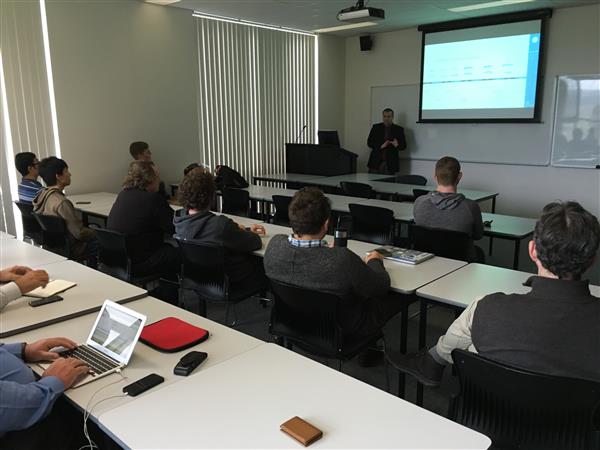 |
| Senior Systems Engineer, Matthew Depetro, addresses an audience of students and staff at the Australian Maritime College in Launceston, Tasmania. A key objective of the Antarctic Gateway Partnership will be to develop a next-generation, hybrid, polar AUV/ROV to acquire high resolution data under sea ice and ice shelves. |
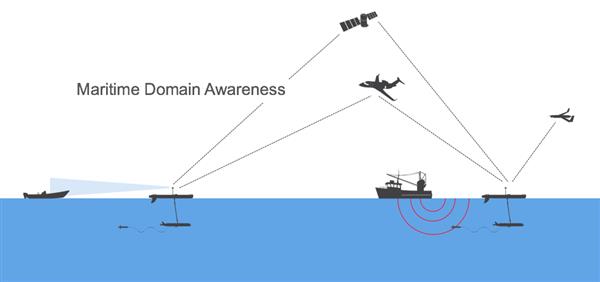 |
| In the Maritime Domain Awareness (MDA) application, Wave Gliders can be used to detect vessels, send alerts and take pictures to aid identification and targeting of interdiction assets. |
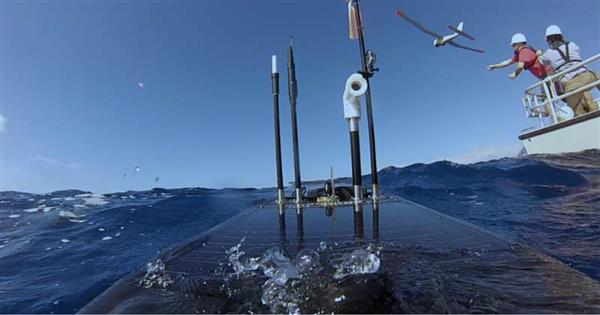 |
| Wave Glider deployed in the Barents Sea in 2015. Forward facing cameras with wide angle and regular lens provided imagery to support studies of glacier position and melt. A sea-surface camera also provided SEEP detection. |


